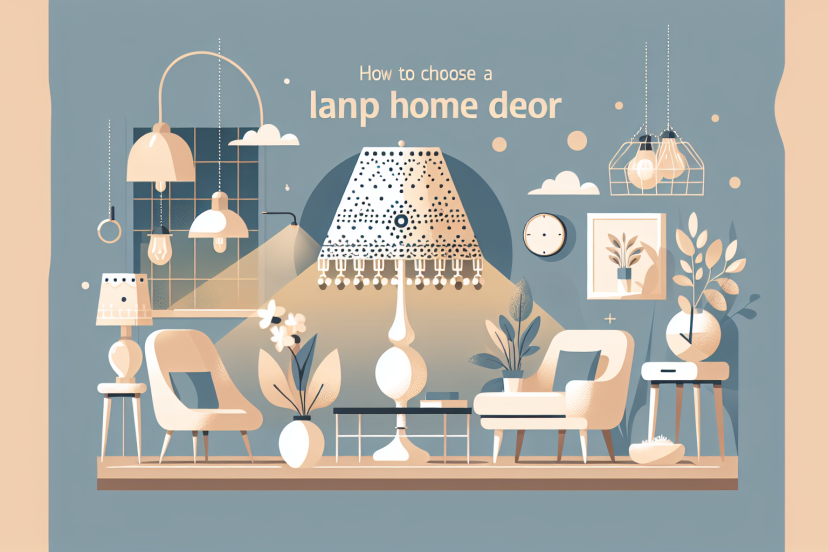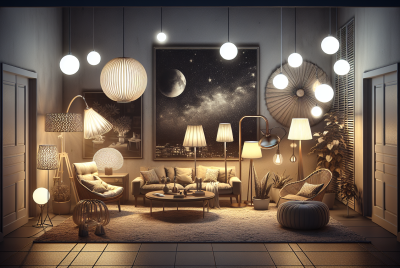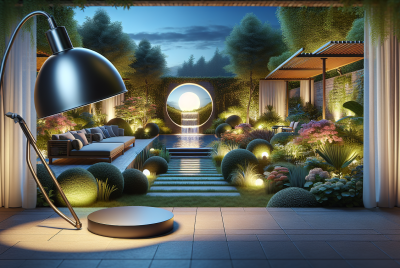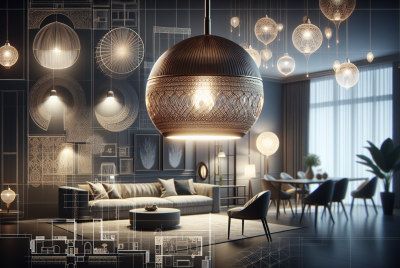How To Choose The Right Lamp For Your Home Décor
In search of the perfect lamp to enhance your home décor? Look no further! This article will guide you through the process of selecting the ideal lamp that complements your style and brings a warm, inviting glow to any room. From determining the right size and shape to considering the types of lighting and finishes, we’ve got you covered. Get ready to transform your living space with the perfect lamp that illuminates not only your home but also your personal aesthetic.
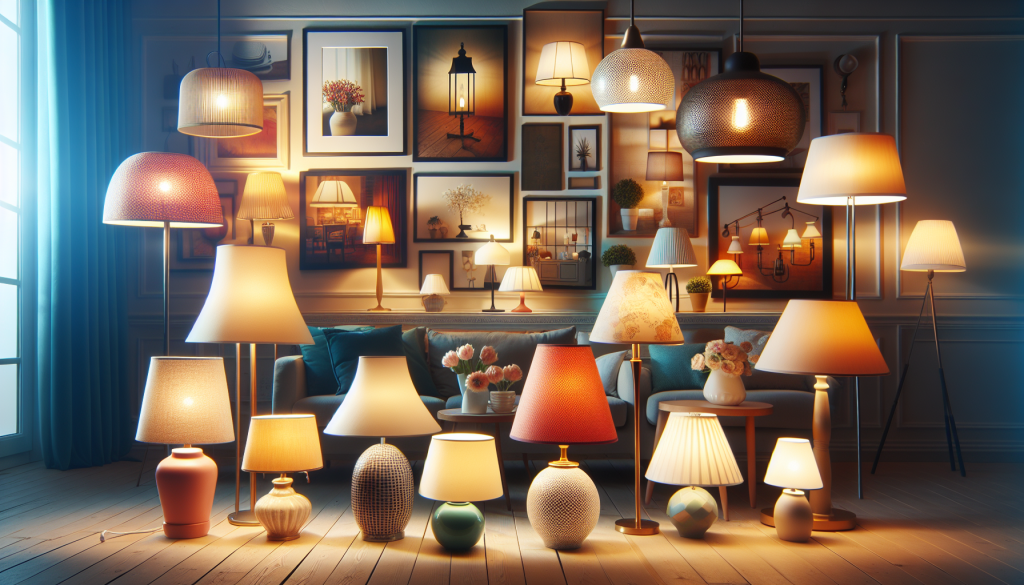
1. Consider the Purpose of the Lamp
Identify the primary function
When choosing a lamp for your home, it is important to consider its primary function. Ask yourself what purpose the lamp will serve in your space. Will it be used for reading, providing ambient lighting, or highlighting a specific area or object? Identifying the primary function of the lamp will help guide your decision-making process.
Choose a lamp based on the purpose
Once you have identified the primary function of the lamp, you can then choose a lamp that best suits that purpose. For reading purposes, you may want to consider a task lamp with a focused beam of light. If you are looking to create a cozy and warm ambiance, a table lamp with a softer glow may be more suitable. By considering the purpose of the lamp, you can ensure that it will meet your specific lighting needs.
2. Determine the Style and Theme
Assess your home décor style
Before selecting a lamp, take a moment to assess your home décor style. Consider the overall aesthetic of your space and the existing furniture and decorative elements. Are you drawn to modern and minimalist designs, or do you prefer a more traditional and ornate style? Understanding your home décor style will help narrow down your options when it comes to selecting a lamp.
Consider the overall theme
In addition to your home décor style, it is also important to consider the overall theme of your space. Are you going for a beach-inspired look, a vintage vibe, or a contemporary feel? The theme of your space can greatly influence the type of lamp you choose. For example, a nautical-themed room may call for a lamp with a rope or driftwood base, while a mid-century modern space may warrant a sleek and angular lamp design.
Select a lamp that complements the style
Once you have assessed your home décor style and considered the overall theme of your space, you can then select a lamp that complements these elements. Look for lamps that have similar design elements or materials as your existing furniture and décor. A well-chosen lamp can elevate your home décor and tie all the elements of your space together beautifully.
3. Evaluate the Size and Scale
Measure the available space
Before purchasing a lamp, it is crucial to measure the available space where the lamp will be placed. Consider the height, width, and depth of the area to ensure that the lamp will fit appropriately. Take note of any furniture or objects nearby that may affect the placement and size of the lamp.
Choose a lamp that fits the scale
Once you have measured the space, choose a lamp that fits the scale of the area. A small lamp may get lost in a large room, while a large lamp can overpower a small space. Finding the right balance is key. Consider the proportions of the lamp in relation to the surrounding furniture and objects to ensure a harmonious and visually pleasing arrangement.
Consider the height of the lamp
In addition to the size and scale of the lamp, consider the height of the lamp. Depending on the intended use and placement, you may want a taller or shorter lamp. For example, bedside table lamps are typically shorter to provide adequate reading light, while floor lamps can be taller to illuminate a larger area. By considering the height of the lamp, you can ensure that it will be functional and proportional to the space.
4. Assess the Lighting Needs
Determine the level of brightness
When assessing the lighting needs for your lamp, consider the level of brightness required for the intended purpose. Some lamps offer adjustable brightness settings, allowing you to customize the light output. If you need a lamp for reading or other tasks that require focused light, opt for a lamp with a higher level of brightness. For ambient lighting, a softer and dimmable lamp may be more suitable.
Decide on the type of lighting
There are different types of lighting to consider when choosing a lamp. You can opt for direct lighting, which provides a focused beam of light, or indirect lighting, which casts a softer glow. Direct lighting is ideal for task-oriented activities, while indirect lighting creates a cozy and relaxing atmosphere. Consider the mood and functionality you want to achieve when deciding on the type of lighting for your lamp.
Consider task-specific lighting
If you have specific tasks or activities that require specific lighting, such as reading, crafting, or working, consider lamps with task-specific lighting features. Adjustable or swing-arm lamps allow you to direct the light exactly where you need it, providing optimal visibility and reducing eye strain. Incorporating task-specific lighting into your space can enhance productivity and comfort.
Evaluate the ambiance required
In addition to the level of brightness and type of lighting, it is important to evaluate the ambiance required for your space. Different lamps can create different moods and ambiances, so consider the overall atmosphere you want to achieve. Soft and warm lighting can create a cozy and inviting ambiance, while cool and bright lighting can make a space feel more energetic and vibrant. Select a lamp that aligns with the desired ambiance of your space.
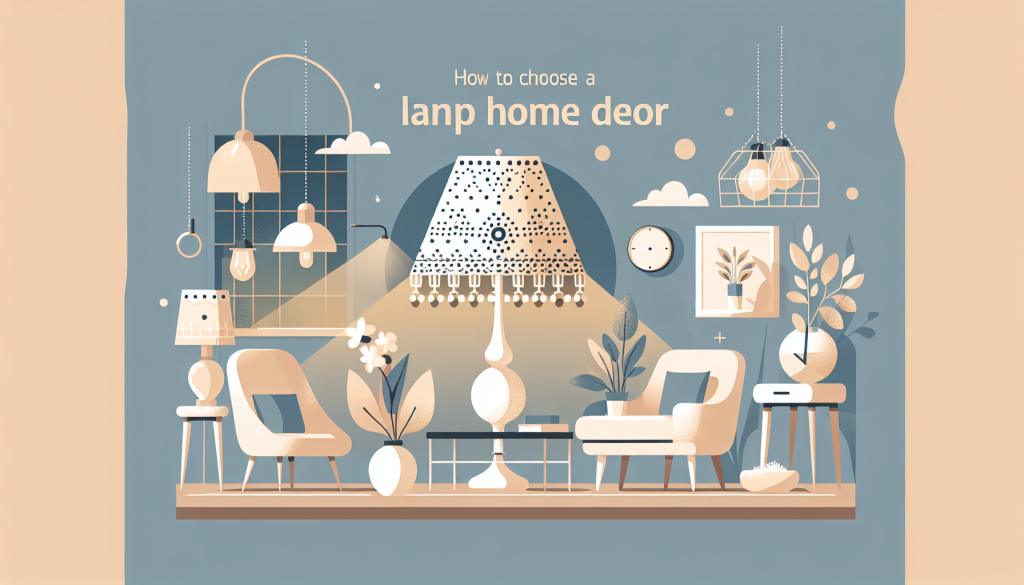
5. Consider the Lamp Placement
Evaluate the desired placement
Consider where you would like to place the lamp in your space. Think about the specific area or object you want to highlight or the function you want the lamp to serve. This will help determine the best placement for the lamp and ensure that it is both functional and visually appealing.
Consider existing lighting sources
When choosing a lamp, it is important to consider the existing lighting sources in the room. Take note of any overhead lighting, natural light, or other lamps that may already be present. This will help you determine if the lamp will be the primary light source in the room or if it will serve as additional lighting. Coordinating the lamp with existing lighting sources can create a cohesive and balanced lighting scheme.
Ensure the lamp’s functionality in the chosen location
Before finalizing your lamp choice, ensure that the lamp will be functional in the chosen location. Consider factors such as access to power outlets, the availability of surfaces to place the lamp on, and any potential obstructions or limitations. Ensuring the lamp’s functionality in the chosen location will prevent any inconveniences or disappointments once the lamp is set up.
6. Select the Right Lampshade
Choose a lampshade size
When selecting a lampshade, it is important to choose the right size. The size of the lampshade should be proportionate to the lamp base and the overall scale of the lamp. A lampshade that is too small can look out of place, while a lampshade that is too large can overpower the lamp. Consider the dimensions of the lamp base and the desired aesthetic when choosing a lampshade size.
Decide on the lampshade material
Lampshades come in a variety of materials, each with its own aesthetic and light-filtering properties. Consider the overall style and theme of your space when deciding on the lampshade material. Fabric lampshades can create a soft and diffused light, while metal or glass lampshades can provide a more direct and focused light. Choose a material that complements your desired lighting effect and home décor style.
Consider the lampshade shape and style
The shape and style of the lampshade can greatly impact the overall look of the lamp. Consider your home décor style and the lamp’s design when choosing the shape and style of the lampshade. A traditional lamp may call for a classic drum-shaped lampshade, while a contemporary lamp may work well with a geometric or asymmetric lampshade. Select a shape and style that adds visual interest and complements the lamp’s overall design.
Evaluate the transparency of the lampshade
Lastly, consider the transparency of the lampshade. Some lampshades are more opaque, diffusing the light and creating a softer glow. Others are more translucent, allowing more light to pass through and providing a brighter and more direct light. Evaluate the desired lighting effect and the functionality of the lamp when deciding on the transparency of the lampshade.
7. Opt for Energy Efficiency
Consider energy-saving options
When choosing a lamp, it is important to consider energy-saving options. Look for lamps that are labeled as energy-efficient or eco-friendly. These lamps are designed to consume less energy and have a lower impact on the environment. By opting for energy-efficient options, you can save money on your energy bills and contribute to a greener and more sustainable future.
Choose LED or CFL bulbs
One of the most effective ways to make your lamp energy-efficient is by choosing the right type of bulbs. LED (light-emitting diode) and CFL (compact fluorescent lamp) bulbs are known for their energy-saving capabilities. They consume less energy, have a longer lifespan, and produce less heat compared to traditional incandescent bulbs. Consider using LED or CFL bulbs in your lamp for optimal energy efficiency.
Evaluate the wattage and lumens
When selecting bulbs for your lamp, evaluate the wattage and lumens. Wattage refers to the amount of energy consumed, while lumens indicate the brightness of the bulb. Look for bulbs with lower wattage and higher lumens to maximize energy efficiency while still achieving the desired level of brightness. Paying attention to the wattage and lumens can help you choose bulbs that are both eco-friendly and functional.
Look for lamps with dimming capabilities
To further enhance energy efficiency and flexibility, consider lamps with dimming capabilities. Dimmable lamps allow you to adjust the brightness according to your needs and preferences. This not only saves energy but also allows you to create different atmospheres and moods in your space. Look for lamps with built-in dimming features or opt for dimmable bulbs to enjoy the benefits of adjustable lighting.
8. Determine the Budget
Set a budget for the lamp
Before embarking on your lamp-shopping journey, it is essential to set a budget. Determine how much you are willing to spend on a lamp and stick to that budget. This will prevent overspending and help you narrow down your options. Remember that lamps come in a wide range of price points, so you can find a suitable lamp within your budget without compromising on quality or style.
Consider long-term costs and maintenance expenses
While considering your budget, it is important to take into account long-term costs and maintenance expenses. Some lamps may require frequent bulb replacements or specialized cleaning methods, which can add to the overall cost of ownership. Consider the lifespan of the bulbs, the availability of replacements, and any other maintenance requirements when evaluating the long-term costs associated with the lamp.
Evaluate the quality and durability of the lamp
When determining your budget, it is crucial to evaluate the quality and durability of the lamp. Investing in a high-quality lamp may cost more upfront but can save you money in the long run. A well-made lamp will withstand the test of time and require minimal repairs or replacements. Consider the materials used, the construction of the lamp, and any warranties or guarantees offered by the manufacturer. Investing in a durable lamp will ensure that you enjoy it for years to come.
9. Test the Lamp
Visit a store to see the lamp in person
While online shopping offers convenience and a wide selection, it is highly recommended to visit a physical store to see the lamp in person. This allows you to assess the lamp’s size, design, and overall quality firsthand. Seeing the lamp in person can help you make a more informed decision and ensure that it meets your expectations.
Try the lamp’s lighting effects
When visiting a store, take the opportunity to test the lamp’s lighting effects. Plug in the lamp and turn it on to see how it illuminates the space. Evaluate the brightness, color temperature, and the light distribution. This will give you a better understanding of how the lamp will function in your home and whether it will meet your specific lighting needs.
Check the lamp’s sturdiness and functionality
While testing the lamp, don’t forget to check its sturdiness and functionality. Assess the stability of the lamp base and any moving parts such as adjustable arms or switches. Ensure that the lamp is easy to use and that all its features and mechanisms work properly. Checking the lamp’s sturdiness and functionality before purchasing will prevent any potential issues or disappointments down the line.
10. Consider Additional Features
Evaluate built-in features like adjustable arms or touch controls
In addition to providing light, lamps can come with various built-in features that enhance their functionality and convenience. Evaluate your specific needs and preferences to determine which additional features may be beneficial for you. Adjustable arms allow you to customize the direction of the light, while touch controls provide easy and intuitive operation. Consider these additional features to enhance your overall lamp experience.
Consider lamps with USB ports or wireless charging capabilities
If you often use electronic devices, consider lamps with built-in USB ports or wireless charging capabilities. These features allow you to conveniently charge your smartphones, tablets, or other devices without needing additional adapters or cables. Having these technological advancements incorporated into your lamp can simplify your space and reduce clutter.
Look for lamps with built-in timers or remote controls
For added convenience and ease of use, look for lamps with built-in timers or remote controls. Timers allow you to schedule when the lamp turns on and off, creating a more automated and hassle-free lighting experience. Remote controls provide the flexibility of adjusting the lighting settings from a distance, perfect for those who want to control their lamps without getting up from their seats. Consider these additional features to customize and optimize your lamp’s functionality.
Choosing the right lamp for your home décor is an important decision that can greatly impact the overall look and feel of your space. By considering factors such as the lamp’s purpose, style, size, lighting needs, placement, lampshade, energy efficiency, budget, and additional features, you can make an informed choice that suits your personal style and enhances your home décor. Remember to evaluate all the options, test the lamp’s functionality, and consider any long-term costs before making your final decision. With a well-chosen lamp, you can create a beautiful and inviting ambiance in your home.

